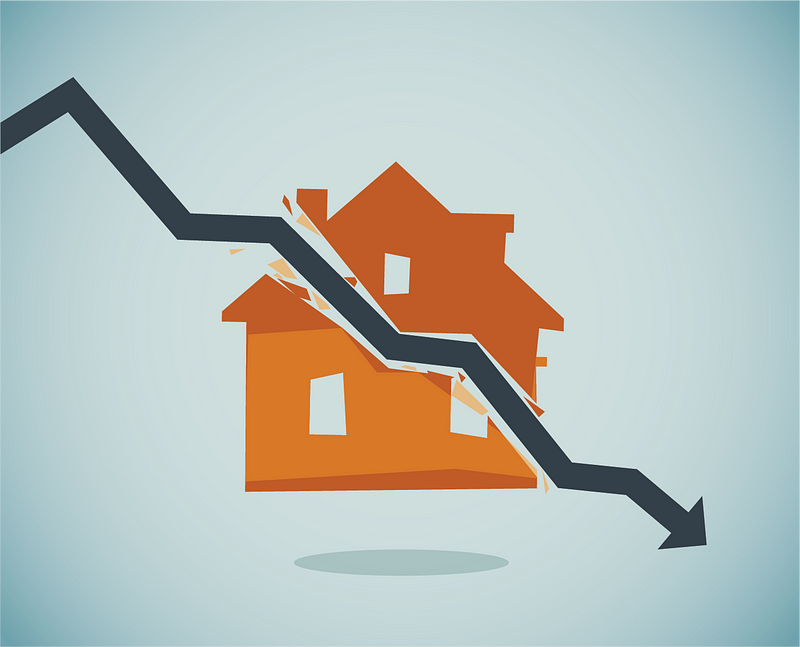Loose Credit Led to Housing Price Bust
Excessive credit supply — not irrational buyer euphoria — was to blame for the 2003–2010 cycle, research shows.
Based on the research of John Griffin and Sam Kruger

When the U.S. housing bubble burst in 2007, the country headed into its worst financial crises since the Great Depression. As the coronavirus pandemic now pushes the U.S. deeper into another recession, lessons from this previous boom and bust may provide insight into the way the current crisis will hit credit markets and how quickly they may bounce back.
There is still no consensus about the causes of the previous boom and bust. Some researchers blame the large amount of credit that flooded the market and led to looser lending standards. As more people were able to get mortgage loans, strong demand for houses pushed up prices.
Another theory is that steadily increasing residential real estate prices led to a kind of house investment euphoria. More and more people began looking at houses as gold mines. Since house prices had continually risen in the past, people extrapolated that they would continue to rise in the future: Homebuyers were speculating.
Texas McCombs Finance Professor John Griffin and Assistant Professor Sam Kruger looked closely at both of these theories in a recent study they conducted with Gonzalo Maturana of Emory University. The researchers took variables established in previous studies and put them into a common framework. By looking at the evidence for each explanation side by side, they were able to see which factors held up to scrutiny.
The researchers found that the supply of credit — especially fraudulent loans and loans to people with poor credit — was most closely linked to house-price change across ZIP codes. Support for the speculation variables was much less convincing.
“This view that people just went out and drove up house prices because they were so euphoric about it really doesn’t hold up with the data,” says Griffin.
“Yes, some people did get excited about housing, but they mostly got excited because of all the easy and fraudulent financing.” — John Griffin
Supply Shock
Between 2000 and 2007 there was strong growth in mortgage securitization, which means that the issuer of a mortgage loan often did not intend to keep the debt. Instead, the original lender often sold the loan to an institution that bundled the loan with other loans and created securities — tradeable financial assets that were then sold to investors.
There is always a risk that a borrower will not repay a loan. As loans were securitized, the original lenders passed this risk to investors. There was much money to be made by selling loans, and not carrying the risk connected to potential payment default sometimes reduced the original lender’s concern about the quality of the loan.
“This led to a kind of race to the bottom that caused all of these below-par and even many fraudulent loans to be issued,” says Griffin.
Homebuyers who were not previously qualified suddenly had access to cheap financing. Housing prices were pushed up — and poised for the inevitable bust when the buyers could not pay.
“Ultimately, when borrowers defaulted on those mortgages, areas of the country with a lot of these buyers had huge house-price crashes.” — John Griffin
Comparing Price Factors
To evaluate the effect of various factors on house prices, the researchers compared variables across geographic areas, using data from real estate database company Zillow, real estate information firm DataQuick, asset-backed security data provider ABSNet, the Home Mortgage Disclosure Act, the IRS, the U.S. Census Bureau, and call reports detailing bank finances. The researchers usually worked with ZIP codes, because there is a large amount of data available at that level.
They looked at a total of seven variables. Four were credit supply variables, two of which were found to be closely linked to house-price changes: prevalence of loans given to those with poor credit and the market share of lenders with fraudulent origination practices. A third credit supply variable was how many loans were made by institutions relying on sources of financing other than deposits, which tended to differentiate between banks and nonbank institutions. The fourth was the share of loans bundled into securities by nongovernment institutions. Neither of these second two factors had the clear correlation seen with first two credit variables.
To look at the other common explanation, that speculation was responsible for the boom and the bust, the researchers considered three additional variables. The proportion of newly purchased homes that were not owner occupied or that served as a second home to an out-of-town owner gave a measure of purchases made as investments. House-price growth just before the boom was examined to look for optimistic extrapolation based on past house-price performance.
Research has shown that there is considerable momentum in the housing market. Periods of high house-price growth tend to be followed by continued high house-price growth. Though the researchers would have expected this phenomenon to also apply on a local level, that was not what they found.
“We were surprised by complete lack of support for that at the ZIP code level,” says Kruger.
Future Housing Crises
Understanding the cause of the recent boom and bust can provide a base for future policy and regulation decisions. Kruger points out that it’s easier to use regulation to affect credit supply than it is to influence irrational extrapolation and speculation.
In the meantime, the economic fallout of the coronavirus crisis will shed light on the quality of lending standards during the past few years.
“We will learn a lot more when we see delinquencies and defaults over these next few months.” — Sam Kruger
Griffin says it’s likely the fraud that previously played a large role in the housing market was also present more recently. If that’s the case -leading to certain market excesses - he expects price crashes.
“I think there’s a lot of fraud behind the run-up over the past five years,” he says, “and if so, that is going to be shaken out over the next year or two.”
“What Drove the 2003–2006 House Price Boom and Subsequent Collapse? Disentangling Competing Explanations” is forthcoming, online in advance in the Journal of Financial Economics.
Story by Stephanie Schwartz


